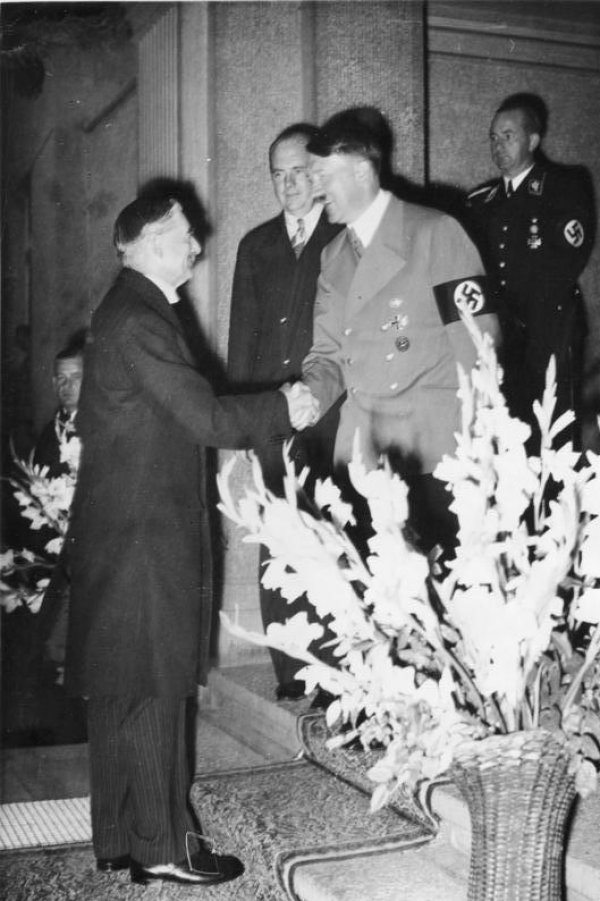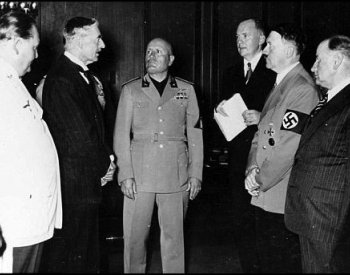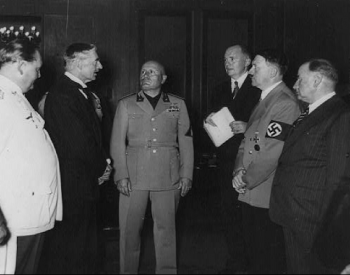Few geo-political events have resonated through the past 70 years like Neville Chamberlain’s decision to pursue the policy of appeasement in reaction to German aggression leading up to the Second World War. Leaders throughout the world have invoked appeasement to justify military action ever since. The decisions that went into Chamberlain’s policy, however, were far from straightforward. Historians have continually debated and reinterpreted these events. In this lesson, students address the issue of appeasement and explore and weigh evidence against and in favor of the policy.
We thank Riverside Unified School District for sharing their Spanish translation with us.

Image: Photo of Neville Chamberlain and Adolf Hitler at the Munich Agreement in 1938. From the Wikimedia Commons.

